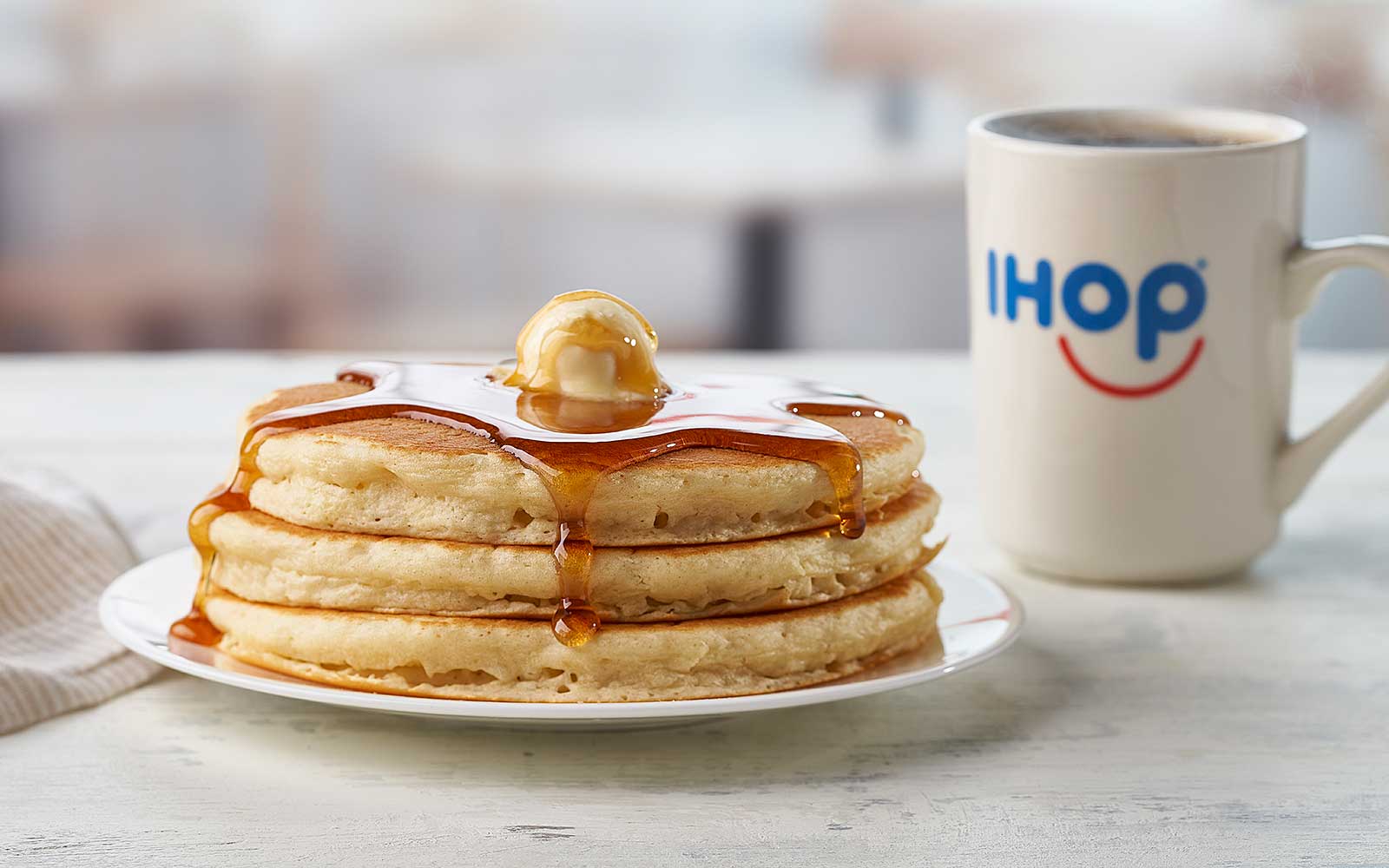The macroeconomic environment has not been kind to IHOP’s development schedule.
Because of near-term supply chain and permit approval challenges, the brand is projecting 35-45 net openings, down from 50-65.
However, brand president Jay Johns assured that it’s just a timing issue and that several franchisees planning Q4 openings are simply pushing into 2023. On a gross basis, IHOP expects to open more than 50 outlets, which would represent one of the strongest years in brand history. In the third quarter specifically, the company opened nine gross stores and a net of two. The breakfast chain ended Q3 with 1,766 stores, including 1,665 in the U.S. and 101 internationally. IHOP is the second-largest casual-dining chain in the U.S. in terms of footprint. Only Waffle House, with more than 1,900 stores, has more.
“The environment obviously is a little bit difficult, but so far the franchisees, we’ve got a lot of excitement,” Johns said during the company’s Q3 earnings call. “We just had our global conference and had a tremendous amount of franchisees talking to us about new restaurant openings, and I think they are still bullish on opening a lot of restaurants of the IHOP brand, but the economics have changed. So we’re seeing a tremendous amount of our openings now being conversions. There’s other restaurants that close down and it’s actually providing an opportunity for people to be able to go out and take advantage of that at this particular time. So I think the pipeline is still looking very good. And like I said, a lot of those will move into next year, which will help us out in future years.”
Last year, Johns told investors that IHOP’s growth relied on four pillars—traditional stores, nontraditional outlets, a smaller prototype, and fast-casual spinoff, Flip’d by IHOP. He noted that each of the formats can be completed through second-generation opportunities, which bring favorable economics. In November 2021, Johns estimated that 600 stores in IHOP’s system were conversions. Previously, the company’s plan was to increase development to 80 gross restaurants per year, up from the historical 40-unit average.
IHOP’s same-store sales increased 1.9 percent in Q3 year-over-year, marking the brand’s sixth straight quarter of positive results. Johns said growth was fueled by a successful promotion with the Minions and a “widely accepted” $5 2x2x2 value platform. Average weekly sales per unit were $36,800, or $1.9 million in annualized AUV. That’s an improvement upon last year’s $36,200. Off-premises weekly sales per store came in at $7,700, which was below the $8,300 and $8,900 in the two previous quarters, showcasing dine-in’s comeback. IHOP’s off-premises business mixed 21 percent, including 13 percent takeout and 8 percent delivery. The brand’s two virtual concepts, Thrilled Cheese and Super Mega Dilla, are in more than 1,100 restaurants.
“I think on the IHOP side also we feel very good about our progress we’ve made,” Johns said. “Coming back after the pandemic we had six straight quarters now being up in sales, and we seem to be hitting our stride right now. We have a great pipeline that’s of initiatives that we have planned out all the way through next year. So we’re feeling very good about where we’re at and what we’re doing with our menu or marketing or loyalty program. We’ve got a lot of things going for us right now that we don’t see any reason why that would change.’
In terms of operations, an additional 4 percent of stores began offering overnight hours. In addition, IHOP added a pay-and-go option for customers to pay via mobile device and expanded its POS rollout to roughly 240 restaurants. International Bank of Pancakes, the brand’s new loyalty program, has 3.3 million signups, already exceeding the chain’s full-year target.








